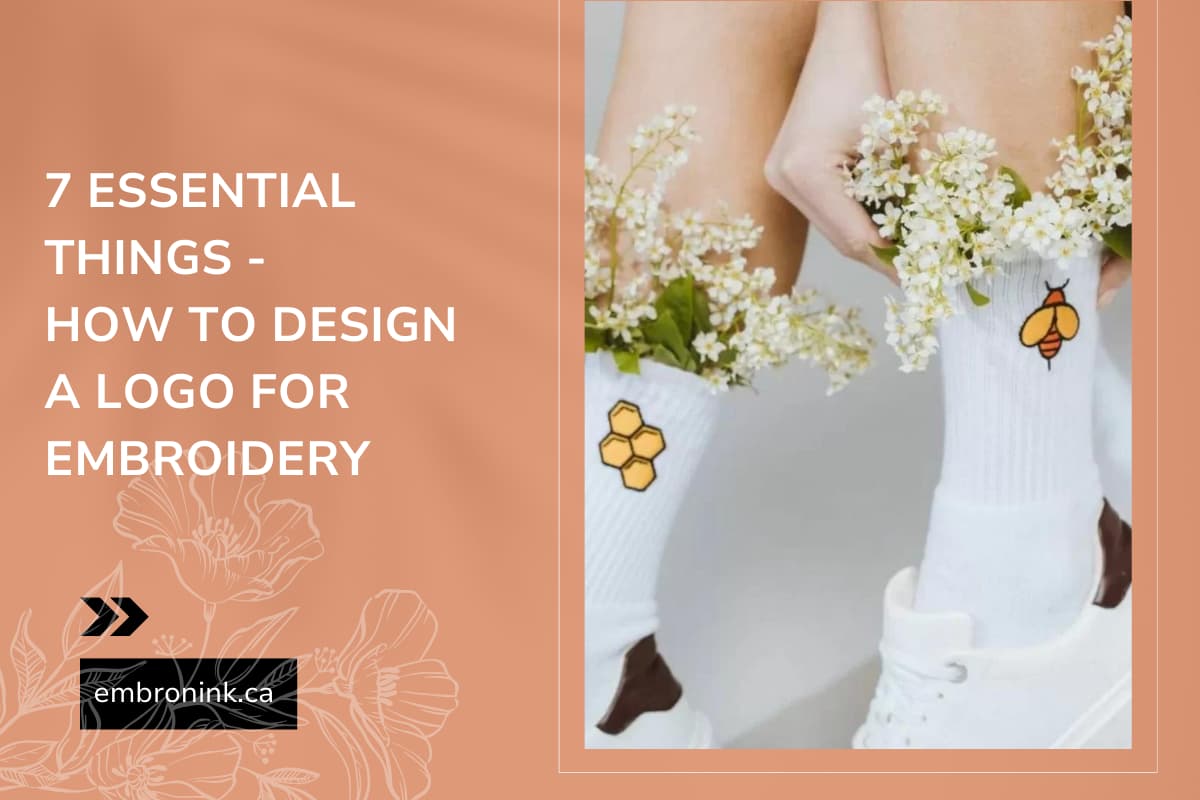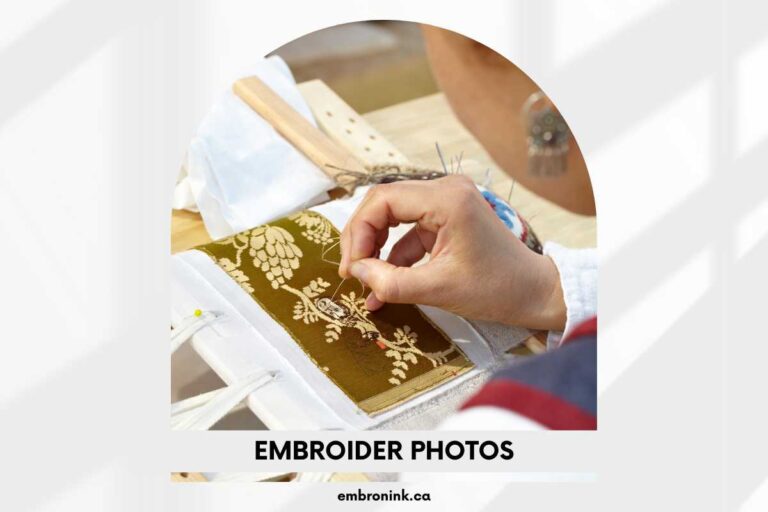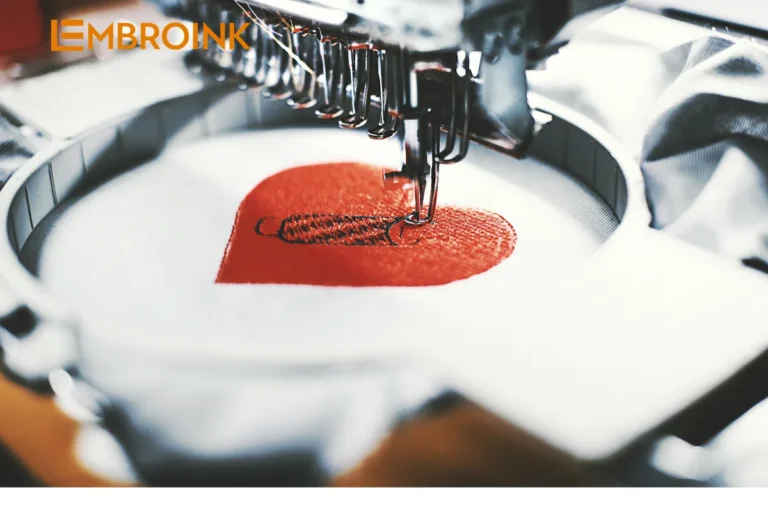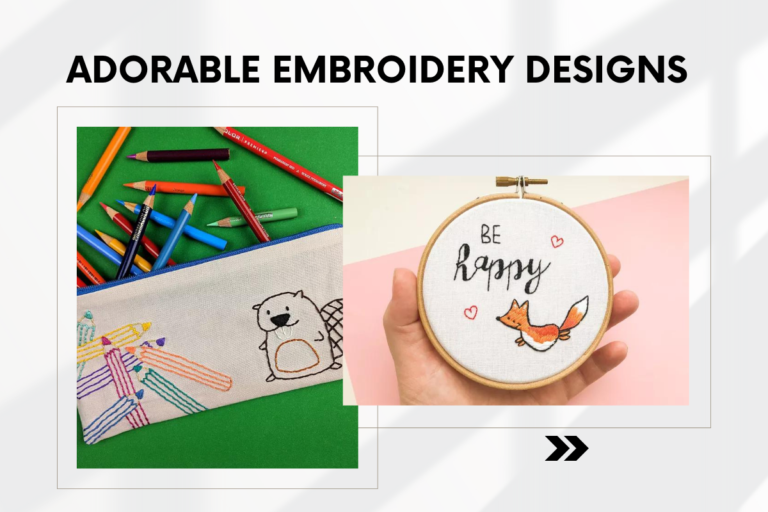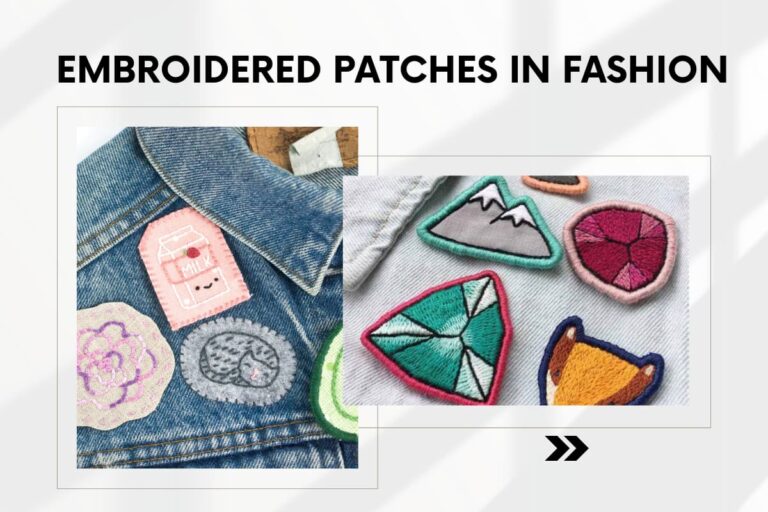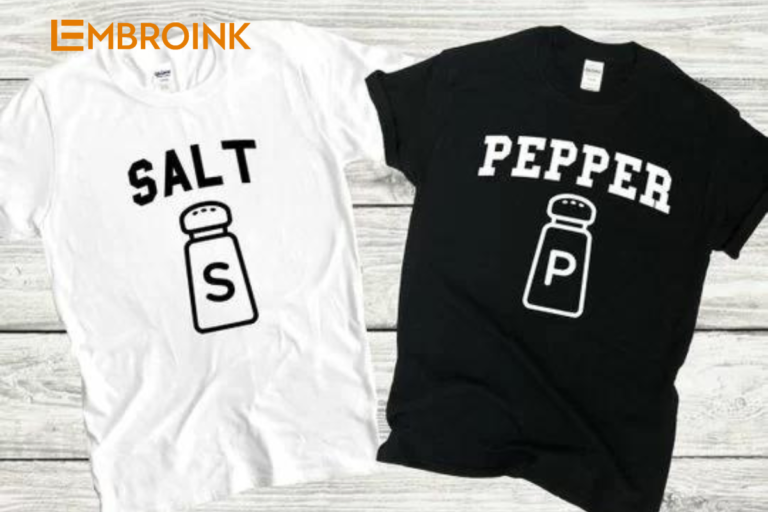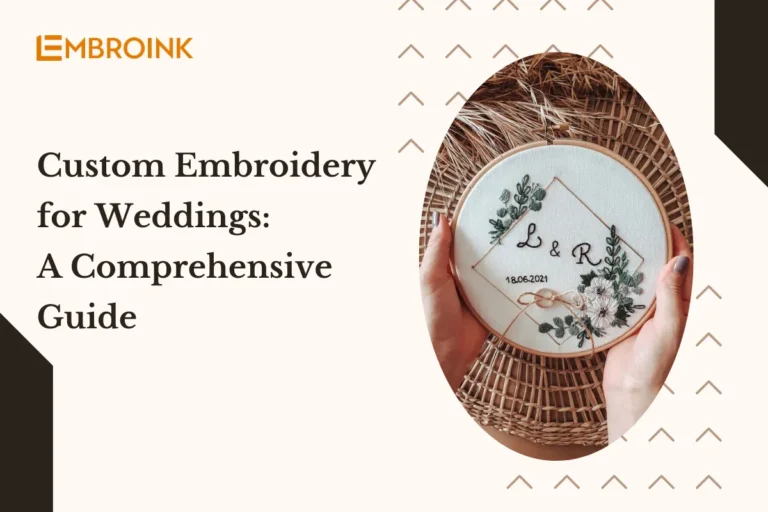7 Essential things how to sesign a logo for embroidery
Are you planning to sell branded merchandise or create t-shirts for a company event? Whether you’re looking to add a logo to apparel for business or personal use, custom embroidery is the way to go.
But where should you begin? Don’t worry—I’ve got you covered. In this article, we’ll dive into everything you need to know about creating custom embroidery designs. From choosing the right logo size to selecting thread colors and fonts, we’ll walk you through the process step by step. Let’s get started!
How to design a logo for embroidery?
Designing a logo for embroidery can be a breeze when you partner with a print-on-demand provider like Printful. Embroidery is more intricate than standard printing, but by working with a supplier, you can avoid the complexities of operating embroidery machines or using digitizing software—we handle that for you.
To ensure high-quality embroidery results, it’s essential that your design file meets specific requirements. Here are 7 key points to keep in mind when preparing your logo design for embroidery.
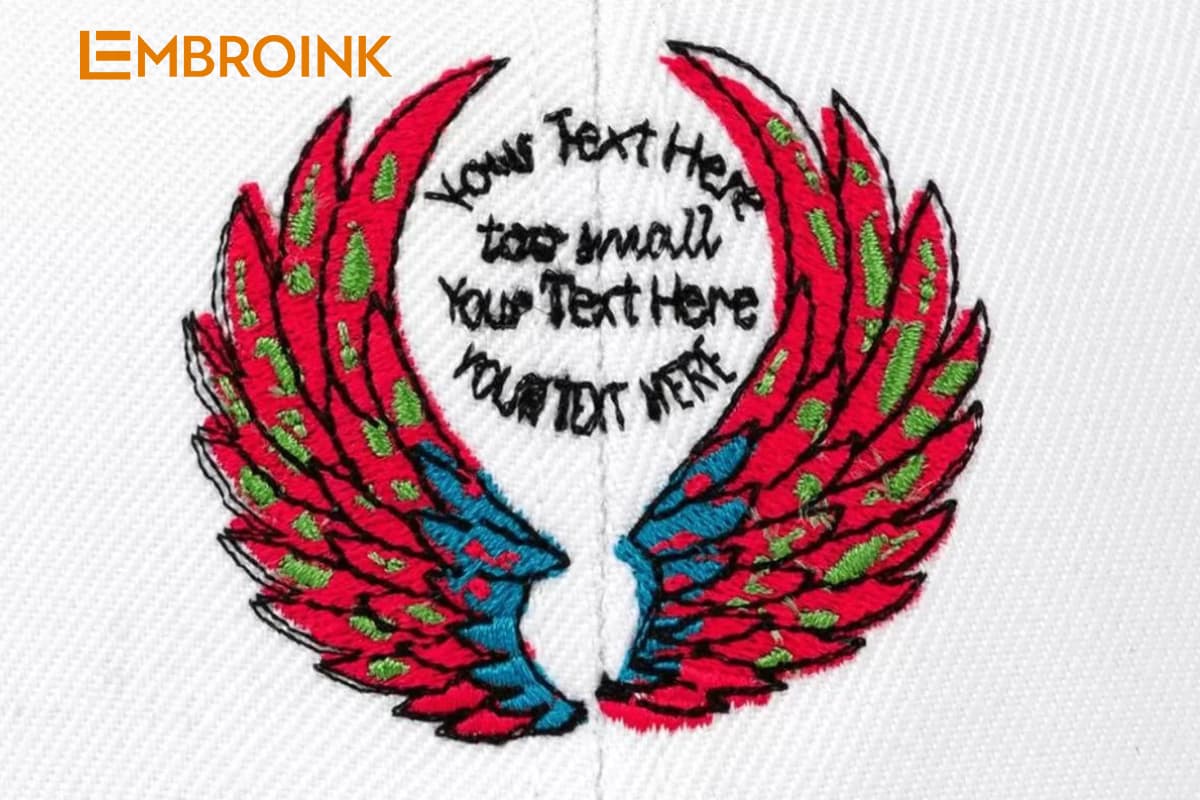
Logo size
When it comes to logo size for embroidery, it’s important to keep in mind that the print areas for most Printful products are relatively small, so your logo needs to look sharp even in a compact format. The available embroidery area will vary depending on the product you choose and where you want your logo to be placed.
For example, some items like the Cuffed Beanie have just one design placement option, while others, such as caps or t-shirts, offer more flexibility. The Unisex Staple T-Shirt, for instance, has five potential embroidery placements: left chest, center chest, large center, as well as left and right sleeve tops. If you’re interested in products with larger print areas, check out our large embroidery collection.
To make sure your embroidered logo comes out perfectly sized, be sure to follow the file guidelines carefully. You can download these guidelines by visiting the product page and clicking on the “File guidelines” link in the right corner. This will take you to the guidelines tab, where you’ll find detailed information about your selected placement, including sizing, fonts, colors, and more.
Logo file requirements
When creating a logo for embroidery, it’s crucial to ensure your print file meets specific requirements. Let’s go over the key aspects: embroidery file format, print file resolution, and logo digitization.
Embroidery File Format
For most of EmbroInk’s services, such as direct-to-garment (DTG) printing or sublimation, designs are typically accepted in JPG or PNG formats. However, for embroidery files, it’s better to use PNG or PDF formats.
While JPG files are accepted, using PNG is recommended. JPG files include a background that can interfere with the design’s appearance and unnecessarily increase the stitch count. PNG files, on the other hand, provide a cleaner result without these issues.
Embroidery File Resolution
To ensure your design looks sharp and professional, it’s essential to meet the resolution requirements. Resolution, measured in DPI (dots per inch), affects the detail of your embroidery. For embroidery products, the required resolution is 300 DPI. Staying at 300 DPI is ideal, as going higher won’t improve the print quality but will increase the file size.
Logo Digitization
Before your logo can be embroidered, it needs to be digitized. This process involves converting your design into a file format that embroidery machines can read using specialized digitizing software.
The good news is that EmbroInk handles the digitization for you. This ensures that the file is fully compatible with the embroidery machines used. The digitization process determines the stitch direction, which can vary each time the design is digitized, potentially altering the final appearance.
There is a one-time fee for each new logo you need to digitize for embroidery. You can find more details about digitization fees on EmbroInk’s website.
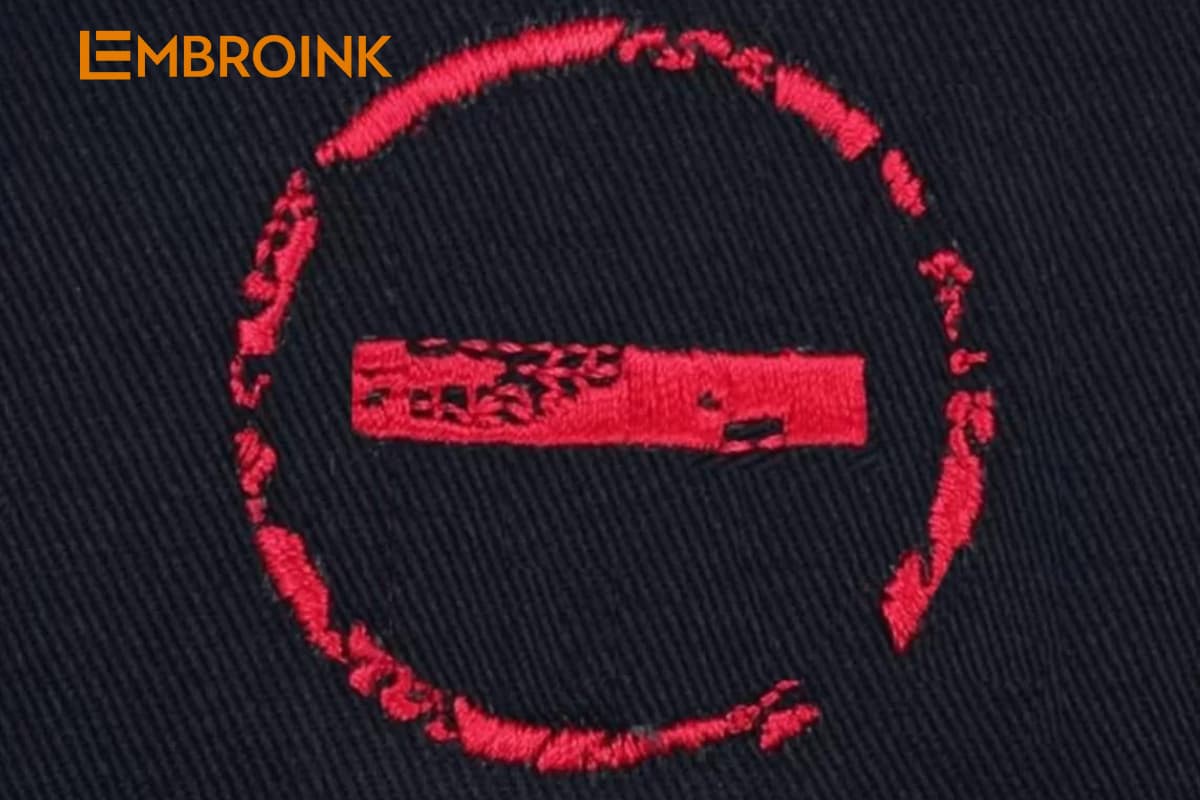
Logo Colors
Choosing the right colors for your embroidered logo is crucial. EmbroInk offers two embroidery options for colors: standard embroidery and unlimited color embroidery.
Standard Embroidery Colors
For standard embroidery, EmbroInk provides a selection of 15 thread colors, with up to 6 colors available per design placement. While the limited color range might seem restrictive, there’s a practical reason behind it. Each embroidery machine can only hold a limited number of thread spools, each with a fixed color, which is why only solid colors can be used—no gradients are possible. If your logo doesn’t require color gradients and fits within these 15 colors, standard embroidery will suit your needs perfectly.
Unlimited Color Embroidery
If your design is more intricate and requires a broader color palette or gradients, EmbroInk’s unlimited color embroidery technique is the way to go. This innovative method uses a single white thread that is colored during the embroidery process, allowing for a virtually unlimited range of colors.
EmbroInk, one of the first providers to offer this advanced technique, makes it possible to achieve complex color designs, including gradients, with embroidery. Although this option comes with additional fees, it provides greater flexibility in your logo design. I’ll cover more details about unlimited color embroidery in the Gradients section.
Level of Detail
One key distinction between embroidery and other printing techniques, like direct-to-garment (DTG) or sublimation, is the level of detail that can be achieved. Embroidery machines may not capture intricate designs and small elements as precisely as other methods.
When designing your logo for embroidery, it’s essential to simplify the design and avoid overly detailed elements. Here are some common pitfalls to be aware of:
Small Details
Logos with very small letters or thin lines may not reproduce well with embroidery. Tiny letters can become unreadable, and thin lines may appear messy due to the single-line stitching method used by embroidery machines. To ensure your design is suitable for embroidery, make sure that text is at least 0.25 inches in height and 0.05 inches in thickness. Lines should also be a minimum of 0.05 inches thick.
Distressed Graphics
Designs with distressed or textured effects may not translate well to embroidery. Embroidery machines typically use flat stitching, and very thin parts of distressed graphics may be rendered using a running stitch, which can result in a loss of texture. If your design includes textured elements, it might not achieve the desired look when embroidered.
Photographic Images
Embroidery machines cannot fully reproduce photographic images. The intricacy of photographs is difficult to capture with embroidery, so you will need to significantly simplify any photo-based designs to make them suitable for this method.
By keeping these considerations in mind, you can ensure that your embroidered logo looks clean and professional.
Types of Stitches
EmbroInk’s embroidery machines use five distinct stitch types, each offering unique effects and applications for your designs. Here’s an overview of each stitch type and how they differ:
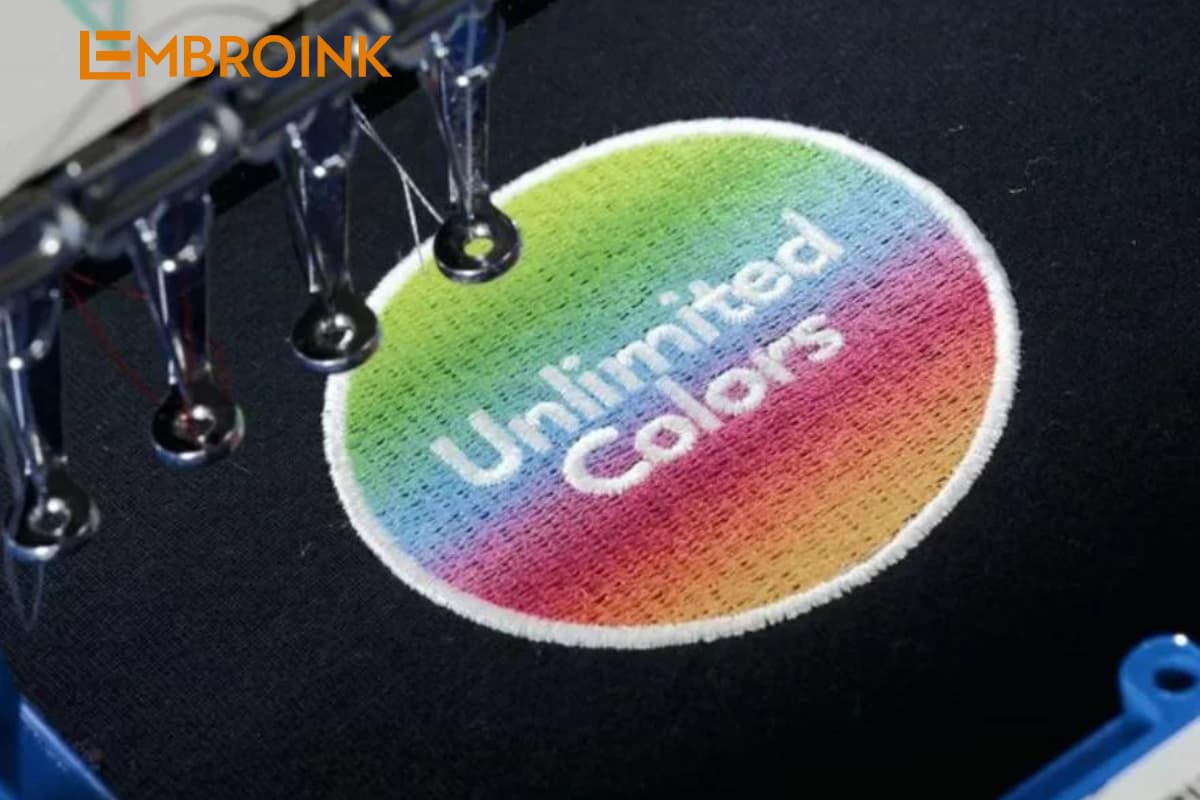
Flat Embroidery
Flat embroidery is a fundamental technique where various decorative stitches create designs on a flat surface. It works well on thicker fabrics and is ideal for logos that require a sleek, clean appearance.
Tatami Fill Stitch
Tatami fill stitches are used to cover large areas of a design. This stitch type consists of short, straight stitches arranged in a dense pattern. It can be combined with other stitches, such as satin stitches, to achieve a fuller look.
Satin Stitches
Satin stitches are designed to create smooth, gap-free areas on fabric. This decorative stitch is often used for outlining objects or creating curved shapes, like flower petals. Satin stitches are frequently combined with fill stitches to enhance the overall design. A similar stitch, the straight stitch, is used for outlining linear designs.
Run Stitch
The run stitch is a simple stitch type composed of a series of straight stitches. It is commonly used for adding small details and embellishments to your design.
3D Puff Embroidery
Although not a stitch type per se, 3D puff embroidery is a technique that creates a raised, three-dimensional effect. This is achieved by adding a foam underlay cut to the shape of the design. The embroidery machine stitches over the foam, giving your design a 3D appearance. This technique is best suited for heavy fabrics, such as caps, and can take slightly longer to complete due to the complexity of the process.
Each stitch type offers different visual and textural effects, allowing you to choose the best option for your design and fabric.
Fonts
When selecting fonts for your embroidered logo, prioritize bold and simple styles. Small, delicate fonts are not recommended as they can become unreadable due to the limitations of embroidery machines, which use run stitches for smaller letters.
Opt for clean, straightforward fonts like Arial, Helvetica, and Myriad Pro. Ensure your font size is at least 36 pt to maintain clarity and impact on the fabric.
Gradients
Standard embroidery cannot achieve color gradients. However, with our unlimited color embroidery technique, you can incorporate a wide range of colors into your design. Here are some key considerations:
- Avoid Complex Designs: Gradients with many drastic color changes can be challenging because the embroidery machine struggles with abrupt transitions.
- Size Matters: To ensure smooth color transitions, the smallest color element should be at least 0.8 inches wide.
- Skip the Run Stitch: Run stitches can make color transitions less smooth, so avoid designs that rely on this stitch for gradient effects.
Currently, unlimited color embroidery is available for a select range of products. Like standard embroidery, your design will need to go through embroidery digitizing software, with the digitizing fee remaining the same. For more details on unlimited color embroidery and associated fees, check our guidelines.

